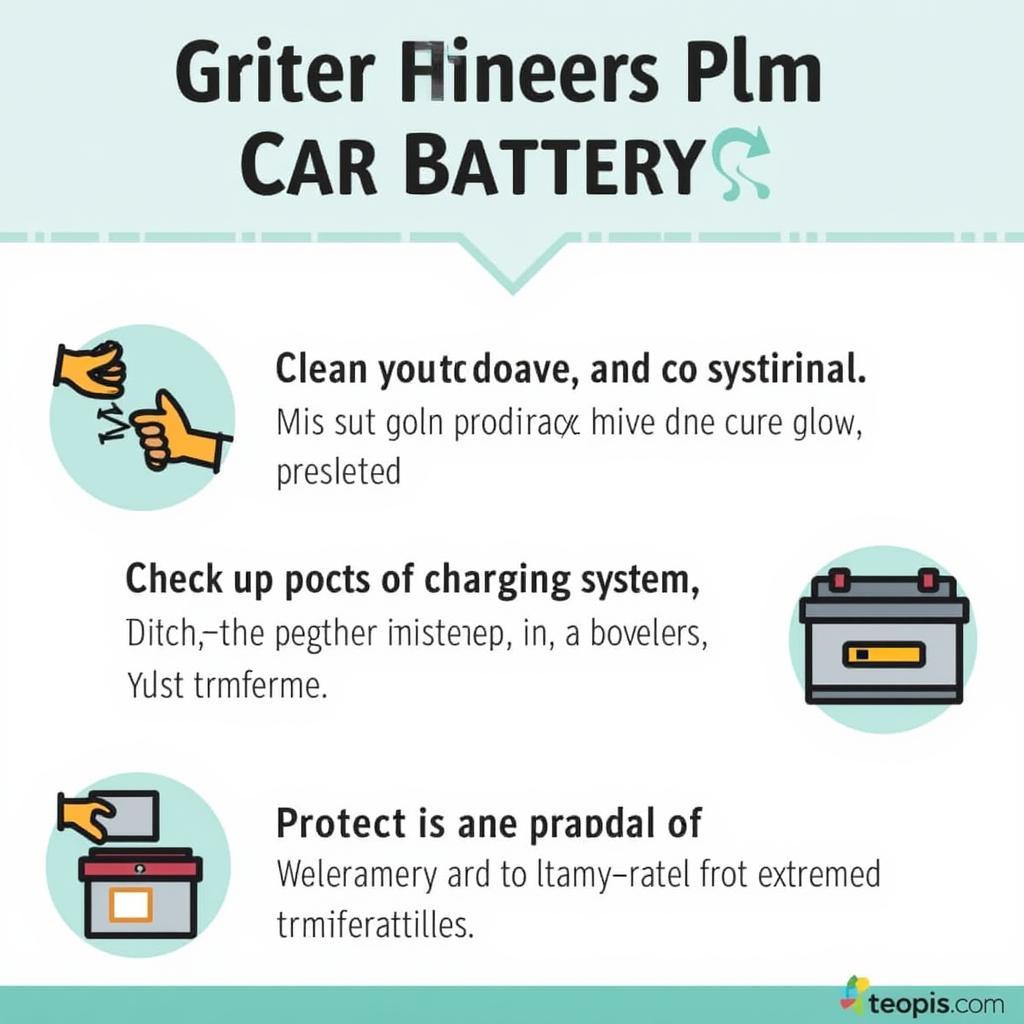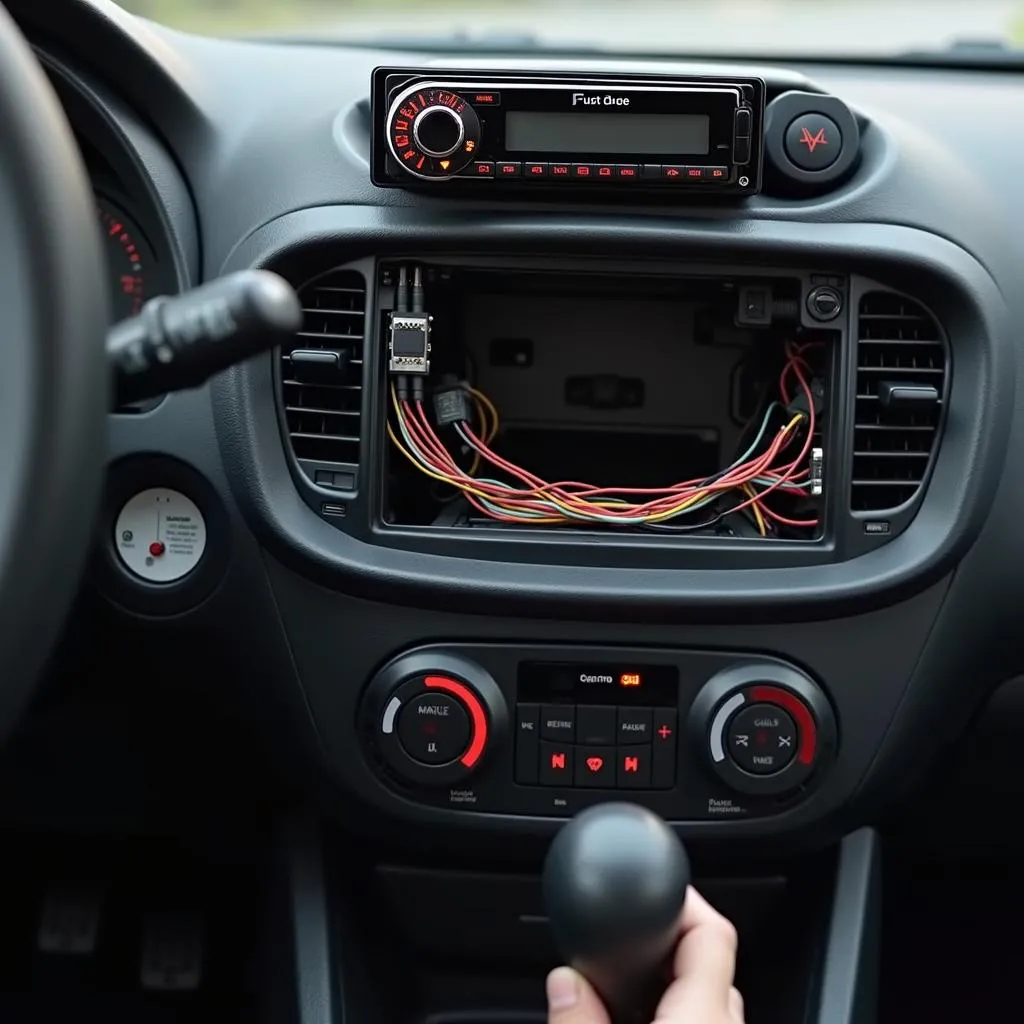A dead cell in your car battery can be a frustrating experience, leaving you stranded and needing a jump-start. This article delves into the causes, symptoms, and solutions for a car battery with one dead cell, providing you with the knowledge to address this common issue.
Similar to a dead hybrid battery, a single dead cell can significantly impact the overall performance of a conventional car battery.
Understanding a Dead Car Battery Cell
What does it mean when one cell in your car battery is dead? A typical 12-volt car battery comprises six 2-volt cells connected in series. If one cell fails, the entire battery’s voltage drops, making it difficult or impossible to start your vehicle. Several factors can contribute to a dead cell, from sulfation and internal shorts to extreme temperatures and age.
Diagnosing a Dead Cell
How can you tell if one of your car battery cells is dead? A simple multimeter test can confirm this. A healthy 12-volt battery should read around 12.6 volts. A drop to 10.5 volts or lower often indicates a dead cell. Other symptoms include slow engine cranking, dimming headlights, and clicking sounds when turning the key. You might also notice a rotten egg smell emanating from the battery, indicating a damaged cell leaking hydrogen sulfide gas.
Solutions for a Car Battery with a Dead Cell
Can a car battery with a dead cell be revived? Unfortunately, a dead cell usually signals the end of the battery’s lifespan. While some DIY methods claim to rejuvenate dead cells, they are often temporary and can be dangerous. The safest and most effective solution is to replace the entire battery.
Like replacing a 2017 jeep grand cherokee key fob battery, replacing a car battery is a straightforward process, though it’s crucial to select the correct battery type and follow safety precautions.
Replacing the Car Battery
Here’s a step-by-step guide to replacing your car battery:
- Gather the necessary tools: Wrenches, safety glasses, and gloves.
- Locate the battery: Typically under the hood, but sometimes in the trunk or under the rear seat.
- Disconnect the negative terminal first, then the positive terminal.
- Remove the battery hold-down clamp.
- Carefully lift out the old battery.
- Clean the battery terminals and tray.
- Install the new battery, securing it with the hold-down clamp.
- Connect the positive terminal first, then the negative terminal.
- Start the engine to verify the new battery is working correctly.
Replacing your honda accord key fob battery is a relatively simple process, much like replacing your car battery.
Preventing Future Battery Problems
How can you prevent car battery issues in the future? Regular maintenance is key. Clean the battery terminals periodically, ensure proper charging system function, and avoid leaving accessories on when the engine is off. Extreme temperatures can also shorten battery life, so consider a battery blanket in cold climates or parking in the shade during hot weather.
This is similar to how maintaining correct acid levels is crucial, as explained in does battery acid go bad.
 Car Battery Maintenance Tips for Extended Life
Car Battery Maintenance Tips for Extended Life
Conclusion
A car battery with one dead cell requires prompt attention. While attempting to revive a dead cell is generally not recommended, replacing the entire battery is a relatively simple and effective solution. By following the steps outlined above and performing regular maintenance, you can ensure your car starts reliably and avoid future battery problems. Don’t delay addressing a dead cell, as it can lead to further issues and leave you stranded.
Just as you’d replace your replace key fob battery toyota, replacing your car battery is an essential maintenance task.
FAQ
- Can I jump-start a car with a dead cell? Yes, you can jump-start a car with a dead cell to get it running temporarily.
- How long does a car battery last? The average lifespan of a car battery is 3-5 years.
- What causes a car battery cell to die? Several factors can contribute, including sulfation, internal shorts, extreme temperatures, and age.
- Can I recharge a car battery with a dead cell? Recharging a battery with a dead cell is not usually effective and might be unsafe.
- How much does a new car battery cost? The price varies depending on the type and brand, generally ranging from $50 to $200.
- What are the signs of a bad car battery? Signs include slow engine cranking, dimming headlights, clicking sounds when turning the key, and a rotten egg smell.
- How can I test my car battery? Use a multimeter to check the voltage, or have it tested at an auto parts store.

